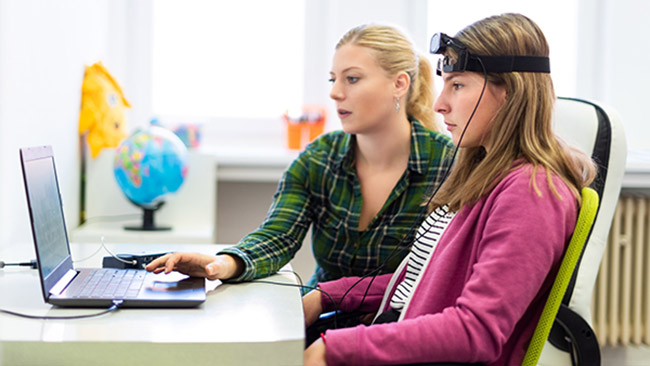
Understanding Learning Disabilities: Strategies for Effective Education-Learning disabilities (LD) are neurological conditions that impact the way individuals process information. People with learning disabilities may struggle with specific skills like reading, writing, math, or reasoning. Understanding these challenges is key to supporting affected students and ensuring they receive the best possible education. In this article, we will explore what learning disabilities are, common types, and strategies for effective education that can make a significant difference in a child’s learning journey.
What Are Learning Disabilities?
Learning disabilities refer to a wide range of difficulties a person might face when it comes to learning. These challenges are not linked to intelligence or lack of effort but are caused by differences in the brain’s structure or function. Individuals with learning disabilities may have normal or above-average intelligence, but they process information in ways that differ from their peers.
Common signs of learning disabilities include trouble with reading, difficulty organizing thoughts, problems with writing, and difficulty mastering basic math concepts. Understanding these signs early can help teachers, parents, and caregivers provide the right support to help the child succeed.
Common Types of Learning Disabilities

There are several types of learning disabilities, each affecting different areas of learning. Here are some of the most common:
- Dyslexia: This is perhaps the most well-known learning disability, affecting reading and writing. Children with dyslexia often struggle with phonemic awareness (the ability to hear and manipulate sounds in words), decoding words, and reading fluency.
- Dyscalculia: Dyscalculia refers to difficulty with math. It can include trouble understanding number concepts, performing basic calculations, or applying math skills to real-world situations.
- Dysgraphia: Individuals with dysgraphia have difficulty with handwriting, spelling, and organizing their thoughts on paper. This can make written expression frustrating and time-consuming.
- Auditory Processing Disorder (APD): This disorder affects the brain’s ability to process auditory information. Children with APD may struggle to understand spoken instructions or follow conversations, even if their hearing is normal.
- Nonverbal Learning Disabilities: These affect a person’s ability to understand nonverbal cues, such as body language and facial expressions. It may also lead to difficulties with spatial reasoning and motor coordination.
Identifying Learning Disabilities
Early identification of learning disabilities is crucial for effective intervention. Teachers and parents should look out for signs that a child is not meeting developmental milestones, such as:
- Difficulty recognizing letters or numbers
- Struggling to follow multi-step instructions
- Inconsistent academic performance
- Avoiding tasks that require reading or writing
- Difficulty remembering or organizing information
When signs of a learning disability are observed, a professional evaluation by a psychologist or special education specialist is often necessary to diagnose the specific learning disability. This process helps determine the most effective support strategies. (Read More: Top Learning and Development Jobs in 2024: Skills Employers Are Looking For)
Strategies for Supporting Students with Learning Disabilities

Once a learning disability has been identified, it’s important to develop a tailored approach to help the student thrive. Here are some strategies that can make a big difference:
1. Provide a Structured Learning Environment
A structured environment helps students with learning disabilities stay organized and focused. Creating a consistent routine, with clear instructions and expectations, provides stability. Visual aids, schedules, and organizational tools can also support students in staying on task and reducing confusion.
2. Use Multi-Sensory Teaching Methods
Engaging multiple senses in the learning process can enhance understanding and retention. For example, a teacher might use tactile materials like clay for writing practice, visual tools like diagrams, or auditory cues to help reinforce lessons. Multi-sensory approaches are especially beneficial for students with dyslexia, as they tap into different ways of processing information. (Read More: Top 5 Apps for Learning ASL: Boost Your American Sign Language Skills)
3. Break Tasks into Smaller Steps
For students with learning disabilities, complex tasks can feel overwhelming. Breaking lessons into smaller, manageable chunks can help make the process more accessible. This step-by-step approach allows students to focus on one part of the task at a time, boosting their confidence and comprehension.
4. Use Technology and Assistive Tools
There are many technological tools designed to assist students with learning disabilities. For instance, speech-to-text software can help those with dysgraphia, while text-to-speech tools can support students with dyslexia. Math-related apps can provide interactive ways to practice calculations. Incorporating these tools into the classroom helps bridge gaps and support students’ individual needs.
5. Provide Extra Time and Flexibility
Students with learning disabilities often benefit from additional time to complete tasks or tests. Offering extended time on assignments, breaking up long reading passages, or providing a quiet space for concentration can help reduce stress and allow students to fully demonstrate their knowledge. (Read More: 7 Games in Legends of Learning for Teachers and Students)
6. Offer Emotional Support and Encouragement
A positive and supportive classroom environment is crucial for students with learning disabilities. Encouragement, praise for effort, and focusing on strengths can help build self-esteem. Teachers and caregivers should also be patient, recognizing that progress may come at a different pace than for other students.
Collaborating with Parents and Specialists

Collaboration between teachers, parents, and specialists is essential for developing an effective education plan for students with learning disabilities. Regular communication between school and home helps ensure consistency and that both parties are aware of the student’s progress. In some cases, specialized tutors or learning support staff may be needed to work with the student on specific skills.
Conclusion article Understanding Learning Disabilities: Strategies for Effective Education
Learning disabilities are a common challenge, but with the right understanding and support, students with LD can succeed in their educational journeys. Identifying learning disabilities early, using tailored teaching strategies, and providing a supportive environment are all essential for fostering academic achievement. With the right interventions and encouragement, individuals with learning disabilities can unlock their full potential and thrive both in and out of the classroom.




